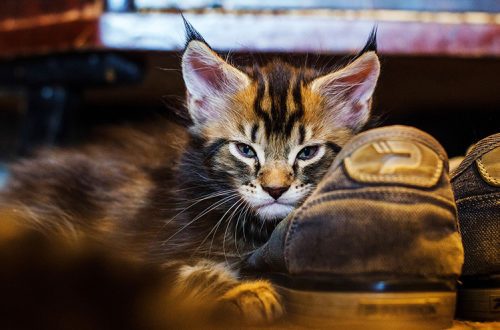
Cat living space
A cat can live both with a person and away from him. When this animal lives in freedom, he is forced to independently defend his territory from the intrusion of “outsiders”, and it does not matter if they belong to the same species or not. Territorial behavior is also clearly manifested in domestic purrs.
Territorial behavior of the cat
Animal behaviorists (ethologists) have found that cats divide their territory into three zones, which can be represented as circles located inside each other.
- The central, smallest circle is the cat’s dwelling, a place to sleep, a refuge, a “sacred place”. Only the closest are allowed here.
- Area for daily promenades. Stranger ships are also not allowed, but people and other pets are allowed entry. The cat constantly patrols this territory. Here she eats, plays, goes to the toilet.
- Hunting grounds that animals can share with neighbors. This is a fairly large area in the event that the cat independently obtains food. If it is “served” by a person, the territory narrows significantly.
If the area of the apartment is insufficient, according to the cat, it increases its “habitat” by developing the “upper floors”. For example, it inhabits the backs of sofas, countertops or cabinets. No matter how small a cat’s personal space is, there is an area that she is not ready to give up. This must be taken into account if several animals live in the house. It is important that they get along with each other and respect each other’s territorial rights. Then they are capable of compromises. The task of the owner is to make sure that each pet has its own bed, bowls, tray, a place for privacy, and all pets receive the necessary share of attention. Arising disputes are most often resolved quite peacefully by the animals themselves. Even if not, then yelling at them or punishing them is completely unproductive: it only escalates tension. As a rule, a cat that encroaches on someone else’s territory is well aware that it violates the boundaries, therefore, when the lawful inhabitant is indignant, it retreats without a fight. But when defending its borders, it is worth dying for. To mark the territory, the instinct makes the cat mark the borders with urine and feces. Of course, if we are talking about an apartment, the owner is unlikely to be delighted. Therefore, an increasing number of people castrate cats. This extinguishes the desire to stake out a habitat. If kittens are born to a cat, they first master only a small patch in the immediate vicinity of the nest and hide at the slightest hint of danger. But gradually, in the company of their mother, they get to know the surroundings. Babies have no right to territory, they unquestioningly obey adult cats.
Arising disputes are most often resolved quite peacefully by the animals themselves. Even if not, then yelling at them or punishing them is completely unproductive: it only escalates tension. As a rule, a cat that encroaches on someone else’s territory is well aware that it violates the boundaries, therefore, when the lawful inhabitant is indignant, it retreats without a fight. But when defending its borders, it is worth dying for. To mark the territory, the instinct makes the cat mark the borders with urine and feces. Of course, if we are talking about an apartment, the owner is unlikely to be delighted. Therefore, an increasing number of people castrate cats. This extinguishes the desire to stake out a habitat. If kittens are born to a cat, they first master only a small patch in the immediate vicinity of the nest and hide at the slightest hint of danger. But gradually, in the company of their mother, they get to know the surroundings. Babies have no right to territory, they unquestioningly obey adult cats.
How to arrange a place for a cat
As we have already mentioned, all cats need personal space. Your task is to arrange a cozy corner where the cat can retire if she gets bored of communicating with other animals or people. A basket with soft bedding, a pillow on a wide windowsill, a house or a platform on a special “tree” can become a sleeping place for your pet. Design sunbeds can be different. To get to some, you need to jump (another opportunity for exercise), the entrance to others is located at floor level. These can be tunnels, baskets, domes, semicircles and shelters of a different shape. Do not forget about scratching posts, hanging toys, ladders. All this will provide the cat with comfort and will allow you to occupy yourself, and not to smoke. By the way, the cat is quite capable of choosing and equipping a “den” on its own. The main thing is to make sure that your home is sufficiently “cat-friendly” and there are no tight spaces where the pet can get stuck.





